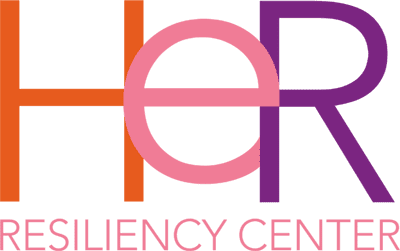Who is
HER
Who is
HER
Who is HER
The “HER” we first meet is voiceless and disregarded. Larger society has not seen and experienced what we have at HER. They have not seen the resilience and strength of a woman who has the tools to access her own power, with a community of other women just like her ready to support.
This “HER” has been ignored and disregarded by society due to choices that she had to make because of the institutionalized systems in which she has had to function. This “HER” has been economically and educationally disenfranchised – preventing her from gaining her true independence which is often rooted in economic empowerment. Both statistics and our first-hand experience at HER tell us that she is experiencing one or more of: homelessness; early unplanned pregnancies; cohabitating with a violent partner; substance use; less access to medical care; exchanging sex for money, a place to sleep, or food – and with little access to healthy outlets, groomed by sex traffickers; or more startling, death.
HER utilizes a person centered and trauma informed approach. We know healing as an individualized process. We understand that treatment and recovery is a process unique to each woman, and it is deeper than any physical wounds. More importantly, we know the journey is possible. Learn more about the trauma informed approach here.
At HER, we try not to use labels. We have felt the stigmatizing impact on our lives with labels such as “at-risk,” and “victim”. Every woman is an individual who is worthy of her place in the world and being identified by her name. Not a label.
The reality is… She is often hidden in plain sight. Considered to be a “problem” or “disturbance” to our world. Not (yet) embraced for her resilience. She has experienced complex trauma, which are every day, small-“t” traumas since childhood. Little “t” traumas are experiences that leave someone feeling hopeless. They are distressing events that can be beyond a person’s ability to cope, but they do not necessarily cause life-threatening or bodily-threatening outcomes.
What does HER stand for? It doesn’t.
It’s what HER represents. For her, by her.
These are HER stories
- The job interview is in 20 minutes and your bus never came. You’re worried about whether the driver will even let you on because your SmarTrip card has -$0.50 on it. The shoes you got from Martha’s Outfitters don’t match the suit your sister gave you. The voice in your head starts to say, “You’re gonna blow it anyway. What’s the point?” Your ex drives by with his boys and tells you they’re going to The Boulevard and he’ll pay for you to see the movie.
- You are 22 and living with your mother. She took you back when you aged out of foster care, and lets you sleep on the couch. She threatens to kick you out every day because you can’t pay rent, but all the places you’ve looked for a job say, “We’ll get back to you.” You’re scared of ending up on the street, but wonder if it could be any worse than living with 6 other people in this one-bedroom apartment.
- He sends you a text, asking if you’re available tonight. You wash your hair and put your makeup on in the bathroom at Starbucks. You don’t want to sleep with him but know it’s the only way you can pay to stay at the hotel another night. You smile in the mirror, practicing what it might feel like to be happy one day.
We’re here to help you write a different ending
HER Values
- Equality: Every woman who comes to HER is treated as a peer, not a “case.” HER acknowledges the inherent wisdom of each woman and seeks to highlight her strengths rather than focusing on deficits.
- Self-determination: Each young woman at HER makes choices for herself. HER provides guidance and coaching, and avoids the use of shame, coercion, or judgment.
- Healthy Boundaries: HER recognizes the importance of healthy limit-setting to demonstrate to the young women we serve effective boundaries and encourage independence over time.
- Use of Self: Everyone at HER shares stories from their own lived experience to enhance the relationship with the young women and provides examples of how to skillfully recover from hardship.
- Low-Barrier: Anyone can be a peer at HER, as long as she identifies as female, and is between the ages of 18 and 25 with a desire for a different life.
